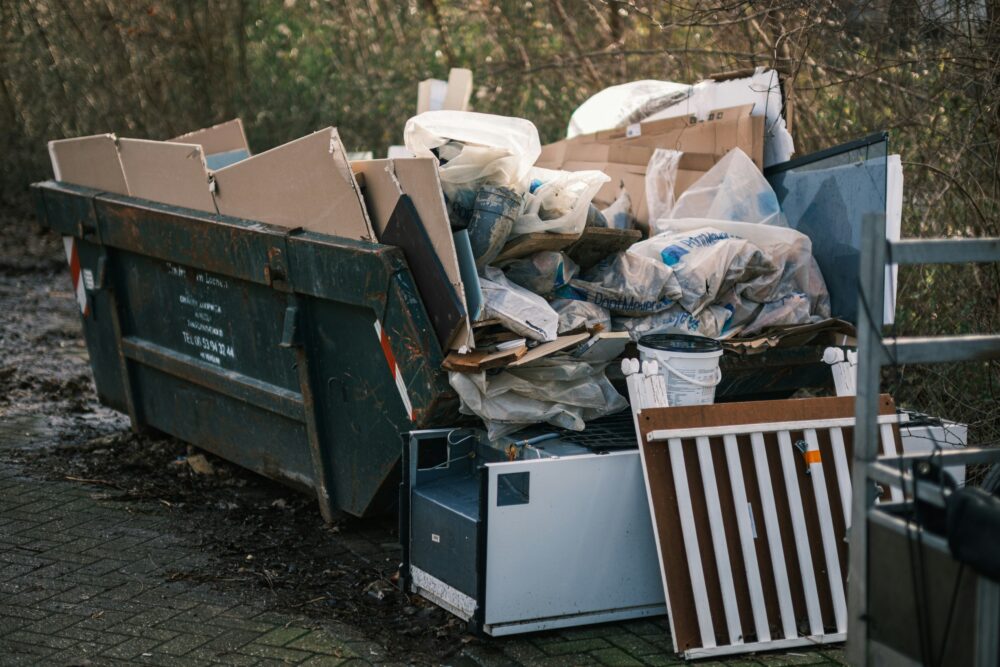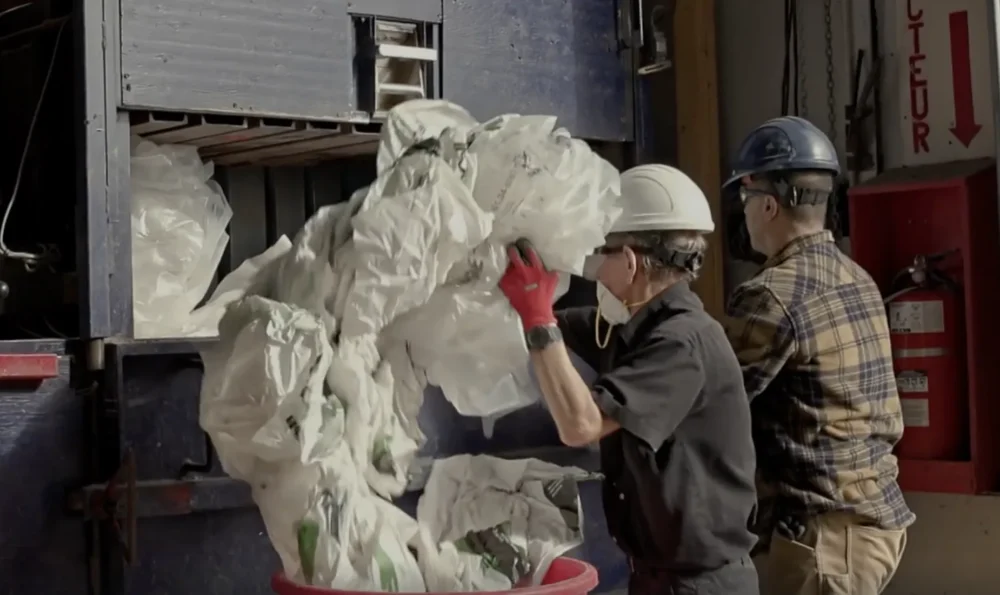8 Major Challenges in Corporate Waste Management
Waste management is often seen as an unavoidable expense. Yet behind every bin, compactor, or collection invoice lie financial, environmental, and operational opportunities that are too often overlooked.
At S3R, we see every day how poor practices, lack of follow-up, or overreliance on traditional suppliers lead to skyrocketing costs and lost value.
This document highlights the key challenges we observe in the industry and explains why companies must rethink their approach to turn waste management into a lever for performance and sustainability.

1. The True Cost of Waste is Poorly Understood
- Most organizations see waste management fees as a fixed expense.
- Yet, by analyzing contracts, collection frequency, volumes, and equipment usage, companies often uncover potential savings of 40–80%.
- Most importantly: without proper structure and methodology, waste management costs can easily double over five years, even if the volume of waste remains the same
Without transparency and rigorous management, costs explode… without any improvement in service.
2. Dependence on Traditional Suppliers and Models
- Collection contracts are often designed to maximize the supplier’s revenue, not to optimize the client’s actual needs.
- The more frequent the collections, the higher the fees.
- Many companies fall into the same reflex: requesting bids for the best price… for the same solution repeatedly.
- This may produce a slight short-term reduction in cost but never challenges the status quo.
The result is not true optimization, only a surface-level adjustment. Smart and sustainable waste management requires challenging existing practices and rethinking the overall approach—not just the unit price.
3. Poor Valorization and Wasted Opportunities
- Far too many recyclable or resellable materials end up in landfills.
- Often the source of the problem is simple: companies don’t really know what is in their waste.
- Without clear analysis, it is impossible to know if certain materials could:
- Be diverted from landfills,
- Be better recycled,
- Or even generate financial rebates.
- And when rebates already exist, the question remains: are they the right ones? Do they truly reflect the value of the materials sent?
Not understanding what is in your waste means letting potential savings and valorization slip away—both financial and environmental.

4. Lack of Proper Equipment or Systems
- Too often, companies face bins that are too small, poorly calibrated compactors, or absent/misused balers.
- Consequences: excessive collection frequency, contaminated materials, logistical inefficiencies… and rising costs.
- The challenge goes further: should you invest in equipment or not? /
- Is a compactor, baler, or shredder worth it for your situation?
- How can you measure whether the investment will generate real savings rather than an extra expense?
- Should you buy, lease, or optimize what you already have?
Without a clear methodology to evaluate these decisions, companies often make costly and irreversible choices. Equipment should be viewed as a strategic tool, not a reflexive expense.
5. Lack of Ongoing Monitoring and Management
- Implementing new practices or equipment is essential… but it’s only the beginning.
- Without follow-up, even the best initiatives lose momentum: good habits disappear, costs rise again, and performance falls back to previous levels.
- This problem is common because many companies treat optimization as a one-time project rather than an ongoing process.
- Proper management should include:
- Clear performance indicators (cost per ton, valorization rate, collection frequency, etc.),
- Regular data monitoring to quickly detect deviations,
- Agile adjustments (rescheduling collections, adapting equipment, reinforcing staff training).
Without rigorous and evolving oversight, early savings vanish, and companies return to the same problems—having wasted time and money.
6. Neglecting Staff Training and Engagement
- Employees are the first actors in waste sorting… and too often, the first forgotten in waste management plans.
- Without continuous training and awareness, mistakes accumulate: poor sorting, contaminated materials, misused equipment. Costs rise, and initiatives lose effectiveness.
- No technology or equipment can compensate for a lack of human involvement.
- At S3R, we have developed a concrete approach to engage teams:
- Awareness workshops tailored to each company’s reality,
- Customized disposal plans and clear labeling to simplify sorting,
- Workstation improvements to make best practices easy to follow,
- Regular follow-up to maintain engagement over time.
People are not the weak link—they are the key to sustainable optimization, provided they are properly supported.

7. Compliance and Regulatory Risks
- Environmental regulations are tightening rapidly, from landfill rules and material traceability to the phased prohibition of certain waste categories.
- Companies unprepared for compliance often face urgent, costly corrections: fines, unexpected upgrade costs, and lost contracts with clients demanding responsible practices.
- Compliance should not be seen as a burden; it is also an opportunity to get ahead of the market.
- Organizations that anticipate regulatory changes:
- Reduce financial and legal risks,
- Strengthen their reputation with partners, investors, and clients,
- Turn compliance into a lasting competitive advantage.
Anticipating regulations not only protects the company but also positions it as a responsible and attractive player.
8. Short-Term Thinking vs. Sustainable Strategy
- Too many companies focus solely on immediate reductions in collection costs.
- While this may seem beneficial in the short term, it only scratches the surface: it does not challenge practices, reduce volumes, or create lasting value.
- True optimization requires a holistic vision, including:
- Source reduction to limit waste generated from the outset,
- Better internal organization to avoid unnecessary collections and maximize valorization,
- Integration with ESG initiatives, environmental certifications, and sustainability standards,
- The ability to demonstrate tangible results to clients, partners, and investors.
- Unlike short-term “discounts”, a sustainable strategy generates greater savings while strengthening credibility and competitiveness.
Long-term thinking transforms waste management into a strategic lever for financial, environmental, and brand performance.
Turning Challenges into Opportunities
Waste management challenges can seem overwhelming, but each one hides an opportunity to create value. By rethinking their approach, companies can turn an overlooked expense into a true performance lever.
- Make costs visible: structured methodology allows expenses to be controlled and stabilized, rather than doubling over time.
- Move beyond the “bids reflex”: challenging the status quo and exploring new solutions transforms simple price adjustments into smart, sustainable waste management.
- Maximize material value: knowing what’s really in your waste allows better recycling, appropriate rebates, and prevents valuable materials from ending up in landfills.
- Choose the right equipment at the right time: buying, leasing, or optimizing existing equipment should be based on rigorous analysis, making investments truly profitable.
- Sustain results over time: integrating KPIs, dashboards, and regular adjustments makes savings and best practices durable.
- Engage employees: awareness workshops, clear disposal plans, labeling, and optimized workstations turn people into performance drivers, not weak links.
- Anticipate regulations: compliance becomes a competitive advantage, enhancing reputation and credibility.
- Think strategy, not just price: aligning waste management with financial, environmental, and ESG objectives ensures tangible long-term gains.
In short, every problem faced today can become an opportunity for savings, valorization, and differentiation when waste management is approached differently.
Conclusion
Waste management should no longer be seen as an unavoidable cost but as a strategic lever. Companies that move beyond short-term reflexes and implement a structured approach achieve three major benefits:
- Financial: significant and sustainable savings, often between 40–80%.
- Environmental: substantial reduction in landfill use and better resource valorization.
- Operational and strategic: simplified processes, ensured compliance, and stronger positioning with clients, partners, and investors.
Companies that take action now will gain a head start, both financially and environmentally.

Looking Ahead
The status quo is costly. Solutions exist, but they require a different, independent approach aligned with your interests. S3R transforms waste into a source of savings and a strategic asset for your organization.
For more in-depth information, the Directory of Best Practices in Residual Materials Management provided by Recyc-Québec is a key resource that goes beyond municipalities.
